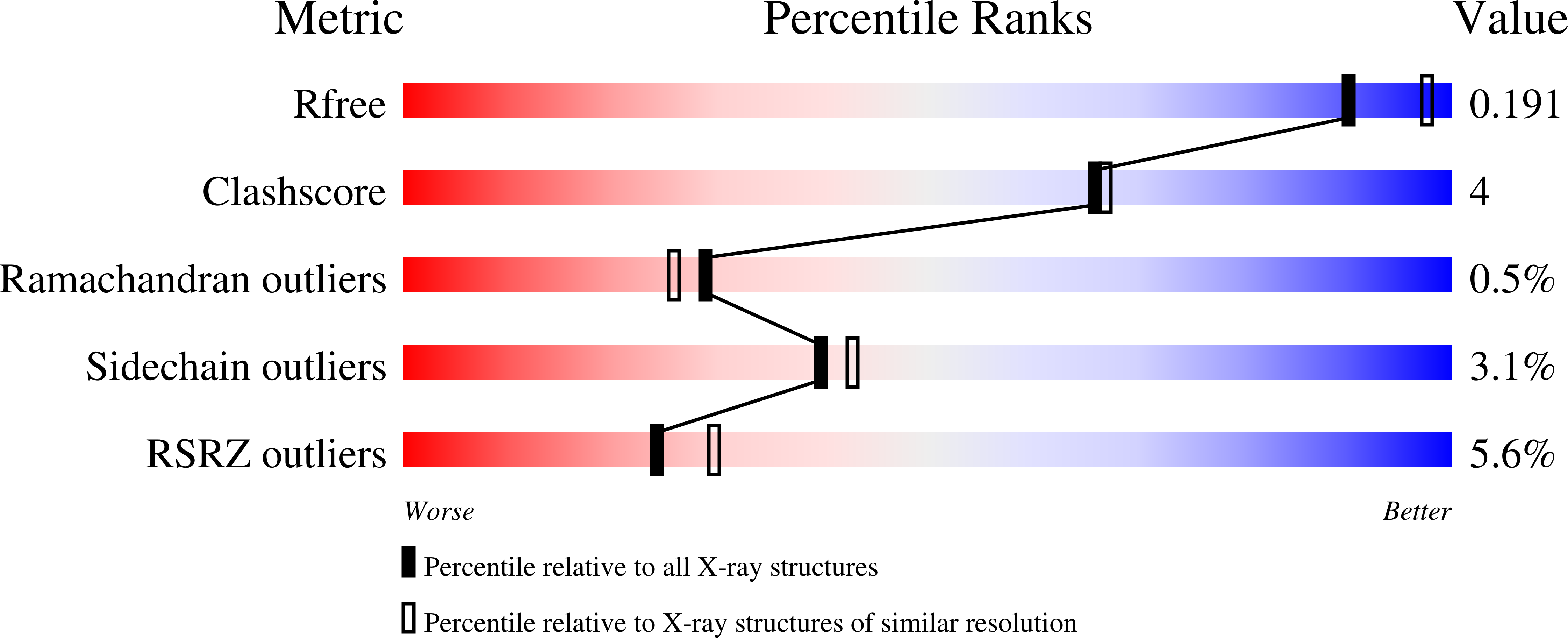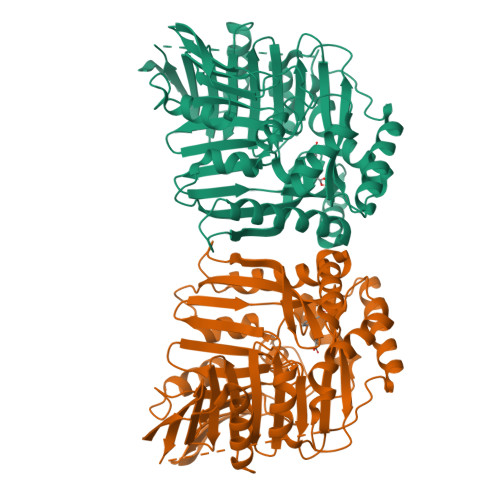Crystal Structures of Yersinia enterocolitica Salicylate Synthase and its Complex with the Reaction Products Salicylate and Pyruvate.
Kerbarh, O., Chirgadze, D.Y., Blundell, T.L., Abell, C.(2006) J Mol Biology 357: 524-534
- PubMed: 16434053
- DOI: https://doi.org/10.1016/j.jmb.2005.12.078
- Primary Citation of Related Structures:
2FN0, 2FN1 - PubMed Abstract:
The salicylate synthase, Irp9, from Yersinia enterocolitica is involved in the biosynthesis of the siderophore yersiniabactin. It is a bifunctional enzyme that forms salicylate and pyruvate from chorismate and water via the intermediate isochorismate. Here we report the first crystal structure of Irp9 and also of its complex with the reaction products salicylate and pyruvate at 1.85 A and 2.1 A resolution, respectively. Like other members of the chorismate-utilizing enzyme family, e.g. the TrpE subunit of anthranilate synthase and the PabB subunit of 4-amino-4-deoxychorismate synthase, Irp9 has a complex alpha/beta fold. The crystal structure of Irp9 contains one molecule each of phosphate and acetate derived from the crystallization buffer. The Irp9-products complex structure was obtained by soaking chorismate into Irp9, demonstrating that the enzyme is still catalytically active in the crystal. Both structures contain Mg(2+) in the active site. There is no evidence of the allosteric tryptophan binding site found in TrpE and PabB. Mutagenesis of Glu240, His321 and Tyr372 provided some insight into the mechanism of the two transformations catalyzed by Irp9. Knowledge of the structure of Irp9 will guide the search for potent inhibitors of salicylate formation, and hence of bacterial iron uptake, which is directly related to the virulence of Yersinia.
Organizational Affiliation:
Department of Chemistry, University of Cambridge, Lensfield Road, Cambridge CB2 1EW, UK.





















